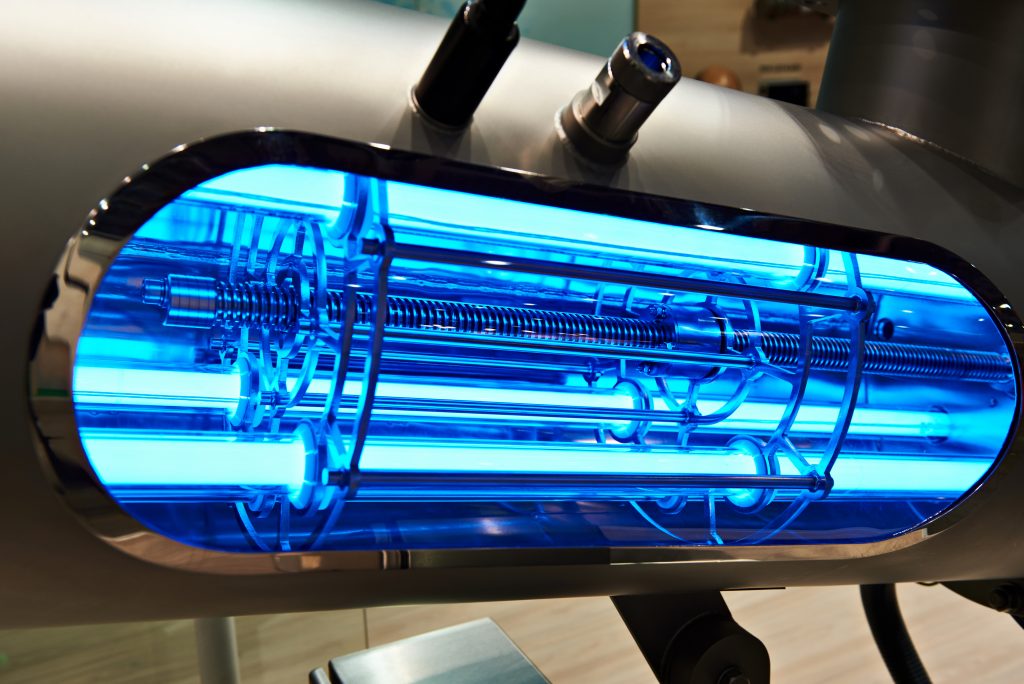
Hi all…over the past couple of decades many drinking water treatment plants have added UV as a treatment, particularly for protozoan (oo)cysts such as those of Cryptosporidium, which are resistant to chlorine. While oocysts are the primary target it is important to recognize that UV is an important technology for the inactivation of a large variety of pathogens. An article published in the Journal of Research of the National Institute of Standards and Technology provides five tables of recommended fluences (dosages) for 1 to 5 log reduction of spores, bacteria, protozoa, viruses, and algae and other large microorganisms. Some of these include opportunistic pathogens such as Legionella pneumophila, Salmonella, Mycobacteria, and the cyanobacterium Microcystis aeruginosa which can produce geosmin, MIB, and some cyanotoxins (including the regulated MC-LR). The paper is the most complete source of such data that I am aware of and is open access.
For comparative purposes the fluence/dose applied for Cryptosporidium oocysts in Canada is typically 20 to 40 mJ/cm2. The bacteria/cyanobacteria listed above are generally easily inactivated at these doses.
Bill
_______________________________________________________________
Sensitivity of Bacteria, Protozoa, Viruses, and Other Microorganisms to Ultraviolet Radiation
Mahsa Masjoudi, Madjid Mohseni, and James R. Bolton
Journal of Research of the National Institute of Standards and Technology Volume 126, Article No. 126021 (2021) https://doi.org/10.6028/jres.126.021
https://nvlpubs.nist.gov/nistpubs/jres/126/jres.126.021.pdf
https://www.nist.gov/nist-research-library/journal-research-nist
Introduction
“This paper represents the third revision of a compilation that goes back to 1999. The original compilation was an internal document of Trojan Technologies [1]. The first revision was published in 2006 [2], and the second revision was published in 2016 [3]. Data from the previous reviews have been included here. In addition, data from the past 5 years (up to March 2021) have been added. Two other reviews of the sensitivity of microorganisms to ultraviolet (UV) radiation have been published elsewhere [4, 5]. Tables A1–A5 (in Appendix A) present, to the best of our knowledge, a summary of all peer-reviewed fluence-response data for UV exposure of various microorganisms that are pathogens, indicators, or organisms encountered in the application, testing of performance, and validation of UV disinfection technologies. The tables reflect the current state of knowledge, but they also include the variation in technique and biological response that currently exists in the absence of standardized protocols (see Refs. 6 and 7). Most of the data are from studies of microorganisms suspended in water; however, there are a few entries for microorganisms on surfaces or in air. Users are encouraged to review the original referenced publication for more details on the experimental protocols before they use the data. The references from which the data were abstracted must be carefully read to understand how the reported fluences were calculated and the assumptions and procedures used in the calculations.”
“Finally, it is noted that in Europe and other parts of the world, the units W m–2 for irradiance or fluence rate and J m–2 for fluence (UV dose) are more commonly used; the conversions are 1 mW cm–2 = 10 W m–2 and 1 mJ cm–2 = 10 J m–2 . The data in the tables are for specific log reductions, where log reduction = 1, 2, 3, 4, and 5 for mean 90%, 99%, 99.9%. 99.99%, and 99.999% reduction, respectively. Log reduction is defined as log10 (N0/N), where N0 is the initial viable microorganism count, and N is the final value after UV exposure.”





